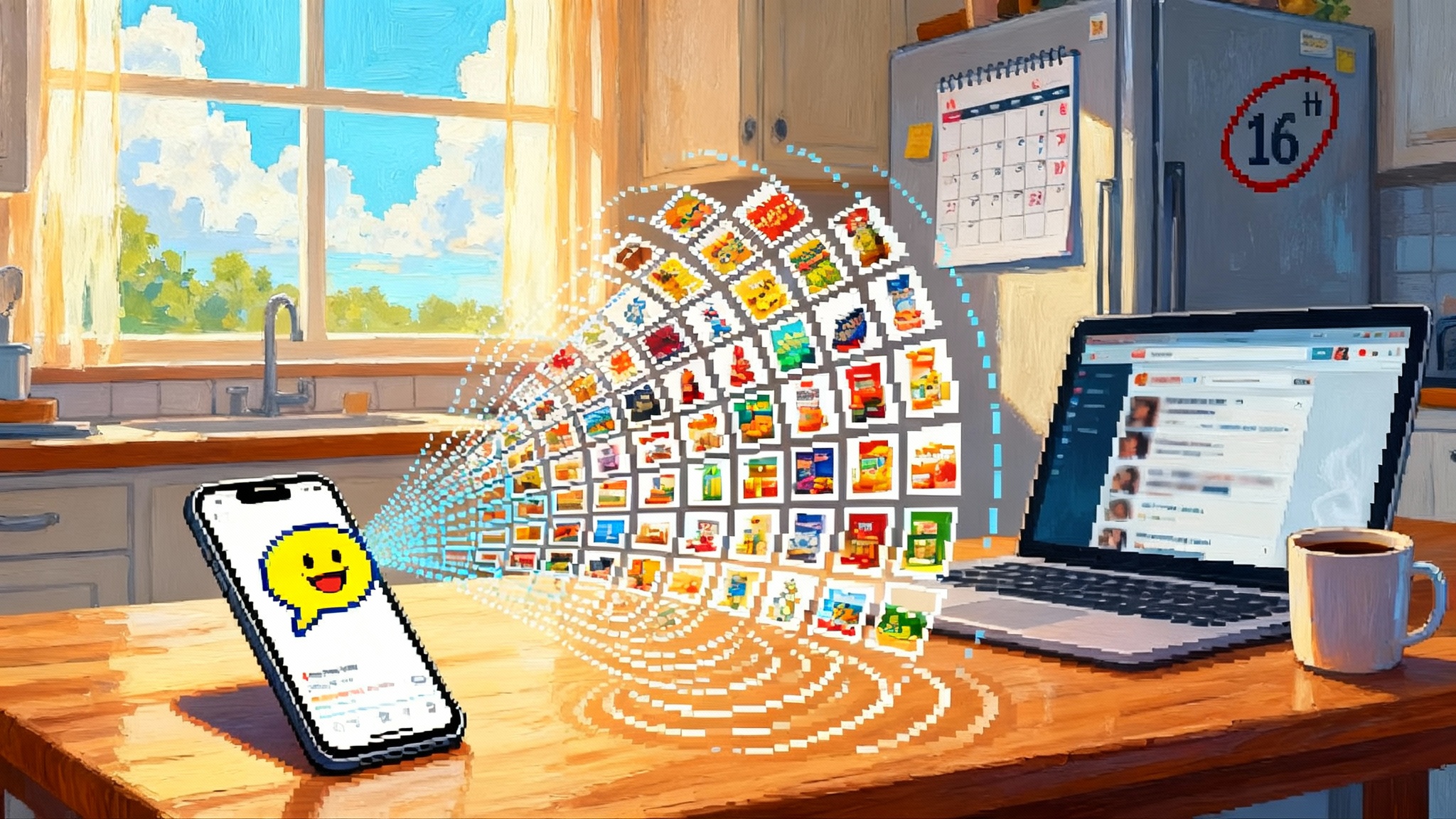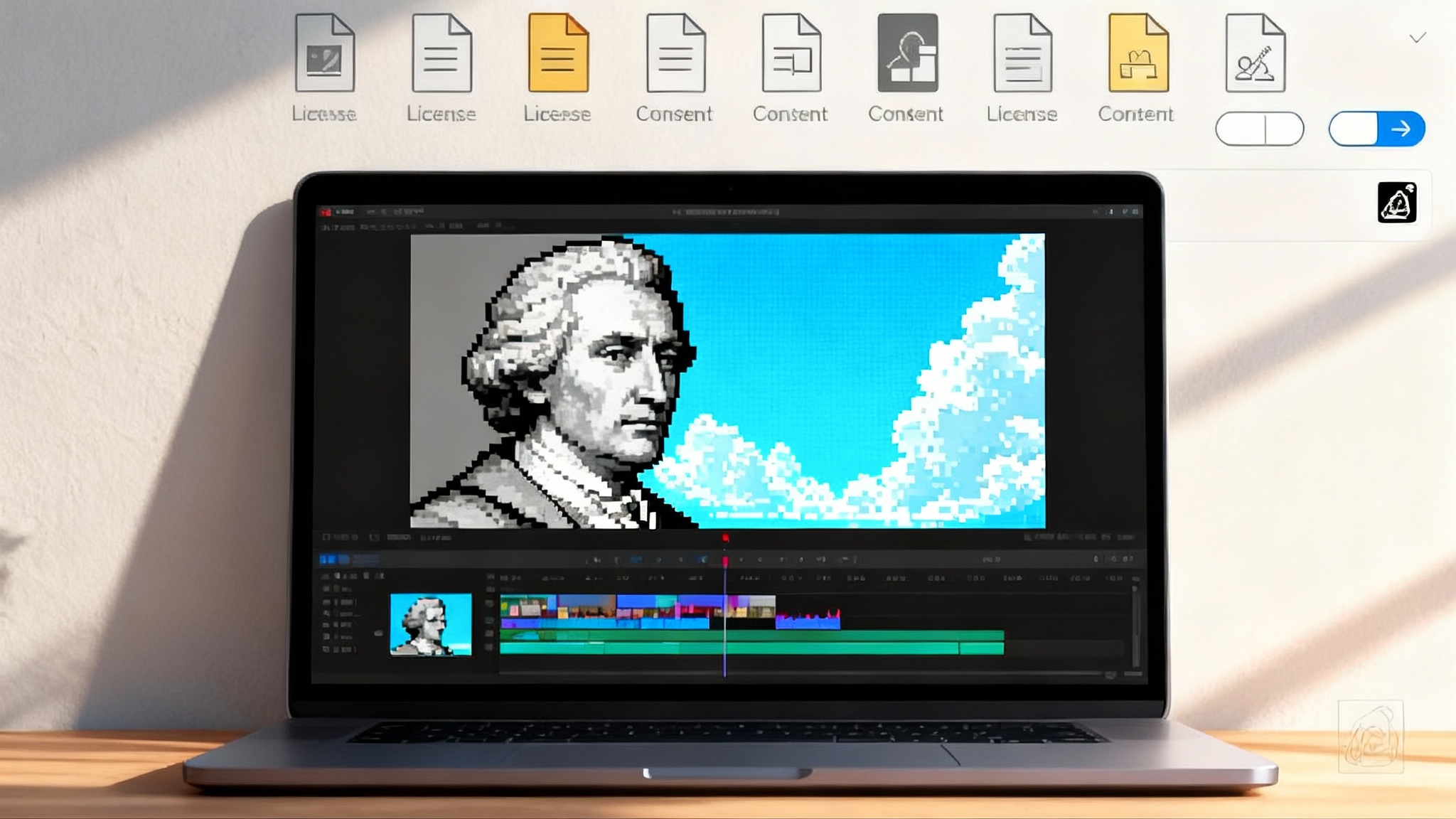Authenticity as an API: The Reality Layer After Deepfakes
Deepfakes flipped the stack from moderation to verification. This playbook shows how signed outputs, Content Credentials, and agent readable truth receipts will reshape feeds, ads, and newsrooms within two years.

The week the stack flipped
In late 2025 the deepfake debate stopped being theoretical. Lawmakers advanced new rules. Platforms shipped visible provenance features. Newsrooms and brands tightened submission standards. The cumulative effect was quiet but decisive. Product teams began to bet on provenance over detection, and the economics of trust tilted from moderation at scale toward verification by default.
A helpful analogy is the rise of DKIM and SPF in email. Spam filters alone could not keep up. The system needed signed envelopes and a way to check them in constant time. Deepfakes are forcing a similar upgrade, not to one protocol but to the entire content supply chain. The web is learning to ask for proof of origin up front, then to use that proof at every downstream decision point.
From moderation to verification
Moderation tries to catch bad outcomes after the fact. Verification tries to prevent them by making truth machine readable at the point of creation and at each edit. When the cost of producing convincing forgeries drops near zero, the only scalable defense is to make authenticity cheaper to prove than to fake.
You can already see that shift in three layers of the stack:
- Generation. Major model providers now attach provenance to certain outputs by default, particularly for images and video. Content manifests and signing keys are increasingly anchored to issuers. Watermarks exist, but the momentum is toward cryptographic statements that survive format changes and heavy editing.
- Capture. Camera makers are rolling out secure capture that signs assets at exposure time and preserves edit history in compatible editors. Early deployments had issues, but the direction is clear. Signatures at capture, then chained edits, create a tamper evident history that survives export and repost.
- Distribution. Platforms have begun to display provenance when present and to use it in ranking or disclosure. The first wave is uneven, with labels sometimes buried and support varying by media type, but the pipeline is finally connected end to end.
The net result is a new muscle memory for teams: ask for proof, read it quickly, and let incentives do the rest.
Authenticity as an API
Developers need a simple way to request, inspect, and rely on authenticity. Think of this as Authenticity as an API. It bundles three primitives that any product team can implement and any agent can consume.
-
Signing. Models and devices attach an issuer signed statement to every output, including time, tool chain, model or firmware identifiers, and a key hierarchy.
-
Chain of custody. Editors and platforms append a verifiable log of transformations. Crop, upscale, color grade, super resolve, subtitle, transcode. Each step is signed and time stamped, so the history forms a linked list of attestations.
-
Inspection. Any client can ask two questions in constant time: who issued this asset and what happened to it since. The answer is a structured manifest plus a small set of revocation and policy checks, evaluated locally or at the edge.
The point is not to block synthetic media. The point is to give software a reliable way to treat different media differently. That is what changes behavior at scale.
Truth receipts, explained simply
A truth receipt is a small, agent readable proof that travels with any image, clip, track, or text. Think cashier’s receipt for media. It contains what a downstream system needs to price integrity without guessing.
A practical receipt includes:
- Issuer identity and public keys for the capture device or model
- Content hash and thumbnails for fast visual comparison
- A list of edits with tool identifiers and timestamps
- Optional disclosures such as “synthetic video generated by model X,” “voice cloned with Y,” or “shot on camera Z with secure capture”
- Revocation and override flags for emergency takedowns
Store it as a signed JSON manifest with a compact binary representation for constrained environments. Cache receipts in a public, privacy preserving index so that any agent can confirm chains in milliseconds without phoning home to the original platform. That index must support key revocation, compromised issuer rotation, and expiry.
Why receipts and not just watermarks or detection? Because agents need something to price. A receipt creates a measurable verifiability score. That number can move budgets, sort feeds, and unlock new product flows in a way that a fuzzy detection confidence never could. For teams standardizing this layer, the Content Credentials standard is emerging as a common language for manifests and provenance signals.
What changes for creators and newsrooms
- Distribution premiums. Platforms can reward verifiable media with better placement. If two short videos perform the same, the one with a complete chain of custody gets the slot.
- Faster lanes for news. Desks can prioritize tips that arrive with signed capture and intact edit logs. A freelancer whose camera signs forwardable proofs gets a faster review queue and higher fees.
- Licensing clarity. Stock marketplaces can tier pricing by provenance completeness. An image with a complete chain, model disclosures, and unbroken signatures merits a higher rate. Buyers know what they are paying for and can prove it downstream.
- Brand safety without blunt blocks. Advertisers can target high verifiability inventory rather than blocking entire topics. Creators gain access to brand spend if they opt into signing and keep their edit logs intact.
The incentive flip is subtle but powerful. You do not ban synthetic. You price provenance.
What changes for recommendation and ads
- Ranking becomes provenance aware. Feeds can boost media with strong receipts and reduce the reach of unsigned reposts. The algorithm does not guess reality. It reads receipts and makes tradeoffs that can be explained and audited.
- Programmatic markets add a verifiability floor. Ad exchanges can require a minimum provenance score for certain campaigns. When buyers set it in the bid request, sellers have a reason to adopt signing and carry receipts through rendering and creative optimization.
- Real time integrity checks. Agents that select creative on the fly can reject assets that fail revocation or mismatch the declared tools. This reduces legal exposure without human in the loop review for every impression.
These changes do not require a new ad tech revolution. They require one new field in the bid and one new step in creative processing. The rest is incentives.
The cryptographic backbone
Signing works only if keys and revocation work. The backbone needs:
- Issuer hierarchies with transparent, auditable chains for model providers, camera makers, and large publishers
- Time stamping and durable logs to prevent replay
- A revocation service and short lived keys to handle compromise events
- Clear states for synthetic, authentic capture, and edited, so policy engines can reason over them
There will be mistakes. Camera signing features will ship with vulnerabilities that force certificate resets. Some watermarking schemes will be brittle under heavy editing. None of that means we abandon the approach. It means we engineer for rotation, disclosure, and recovery, the same way the web learned to handle certificate replacement at scale.
The policy wind at the back
Policymakers are not prescribing a single technology. They are shaping incentives. In the United States, action in 2025 focused on faster removal of explicit harms and clearer penalties for distribution. In Europe, the Artificial Intelligence Act imposes transparency obligations for synthetic media and for general purpose models on a staged timeline, with key provisions applying by 2026, as described in the European Commission overview of the AI Act. The direction across jurisdictions is the same. If your system makes synthetic media, people must know it. If you distribute media at scale, you must mitigate systemic risks.
For builders, this is an operational requirement, not only a legal one. If your outputs are not signed and your pipeline drops receipts, you will pay for it in distribution, monetization, or both. Provenance becomes an input to ranking, not a badge for a press release.
Agents need truth receipts as a UX primitive
Most people will experience authenticity through their agents, not their eyeballs. That makes truth receipts a user experience primitive as basic as a hyperlink.
- Retrieval augmented generation. When an assistant composes a briefing from clips and posts, it can select sources with strong receipts, weight them higher, and annotate the answer with an integrity badge. If a source lacks a receipt, the agent either downranks it or calls out the uncertainty. This dovetails with the way agents learn to click and orchestrate multi step tasks across the open web.
- Creative copilots. When a video assistant assembles a rough cut from b roll, it can prefer shots with intact receipts so the final render inherits a clean chain and qualifies for brand spend.
- Inbox and chat hygiene. Clients can automatically collapse unsigned media into a low trust tray. This is not a ban. It is a sort that lets attention flow toward content with proof.
Two design rules make this work. First, show the badge only when there is a real receipt. No decorative labels. Second, make inspection one click or one tap, with human readable summaries, not raw cryptography.
A 12 to 24 month roadmap
Near term, 3 to 6 months
- Ship signing in your generators. If you produce images, video, or audio, attach signed manifests with issuer keys and tool disclosures. Treat this as a default, not a toggle.
- Add receipt checks in ingestion. If you run a platform or a media workflow, verify manifests on upload. Preserve the chain through edits and transcodes. Do not strip the proof.
- Add a provenance field to ranking and ads. Start at five percent of traffic. Measure downstream impact on watch time, reports, and brand suitability. Make your case with data.
- Update contributor guidelines. Newsrooms and marketplaces should specify acceptable cameras, capture settings, and editor versions that preserve receipts. Offer higher rates for compliant submissions.
Mid term, 6 to 18 months
- Expand signed outputs to more modalities. Bring provenance to speech synthesis and voice cloning. Include model version identifiers and safety filters in the manifest.
- Build a public, privacy preserving receipt cache. Use short lived certificates, verifiable logs, and revocation lists to keep the system safe without creating tracking vectors.
- Negotiate provenance service levels with ad buyers. Define a minimum score for campaigns and a remediation path for invalidated assets that does not collapse the whole flight.
- Teach agents to price uncertainty. Expose a verifiability slider in creative tools and assistants. If a user chooses to include low trust content, show the tradeoff and let them proceed.
Longer horizon, 18 to 24 months
- Device defaults. Phones and cameras ship with secure capture turned on by default. Editors carry edit logs by default. Stripping receipts requires a conscious action with a visible warning.
- Platform wide incentives. On large platforms, provenance becomes a meaningful ranking feature, similar in weight to watch time or click through for certain surfaces.
- Market pricing. Programmatic exchanges and creator marketplaces bake verifiability into bids and payouts. Creators get paid more for clean chains and faster approvals. Unsigned media still exists, but it earns less by design.
Practical implementation notes
- Latency. Verification must be sub 10 milliseconds at the edge. Precompute revocation checks and issuer validation. Cache receipts with content delivery networks the same way you cache images.
- Storage. The manifest is small. The challenge is versioning and search. Use content addressable storage with deduplication. Keep a public key registry with rotation history.
- Security. Treat signing keys like payment keys. Hardware backed modules, short expiries, split control, and formal incident response for compromise events.
- Human factors. UI should avoid fear based labels. Show simple, consistent affordances. For example, a neutral badge that expands to a clear explanation: Created with Model X on Date Y. Edited in Tool Z. No anomalies detected.
What could go wrong, and how to respond
- Metadata stripping. Some platforms will continue to strip or ignore receipts. Incentivize instead of pleading. Pay more for compliant inventory. Rank compliant media higher. Publish compliance dashboards.
- Brittle watermarks. Watermarks alone cannot carry policy. Use them as a signal, not a root of trust. The signature and manifest carry the policy.
- Compromised keys and buggy rollouts. Build for rotation. Publish revocation events quickly. Agents must check freshness, not just presence.
- Privacy pitfalls. Provenance is about content, not identity. Avoid stuffing manifests with personal data. Use pseudonymous issuer IDs that can be audited without exposing individuals.
The market context that makes this urgent
Trust signals do not live in isolation. They plug into a broader transformation of how AI is built and judged. As regulators and buyers move from glossy demos to rigorous reviews, governance shifts from leaderboards to audits. At the same time, enterprises are rethinking their data supply chains, moving toward licensed and provable inputs, a shift to clean data supply that naturally complements provenance in outputs. The same incentives that price training data quality will soon price media integrity in distribution.
The accelerationist case
If you want safer, richer agent experiences soon, lean into provenance now. Signed outputs reduce the cost of trust. Receipts make that trust portable. Agents can finally reason about media quality in a measurable way.
- Better recommendations because feeds can consider integrity alongside engagement
- Better ads because buyers can target risk levels precisely
- Better creator economics because proof of origin captures value that would otherwise leak
Most importantly, this approach scales with faster models. It does not rely on humans to keep up. It sets a default that rewards honesty in the pipeline and lets everything else fall in line.
The reality layer, finally
We are not going back to a world where everything on the screen was captured by a camera. The goal is a world where software can tell the difference and act accordingly. Authenticity as an API is how we build that reality layer. It starts with signed model outputs and default Content Credentials. It becomes durable with agent readable truth receipts. Over the next two years this will not be optional garnish. It will be the trust substrate for the agent economy and the backbone of a healthier internet. The sooner we wire it in, the more interesting the next generation of products becomes.








